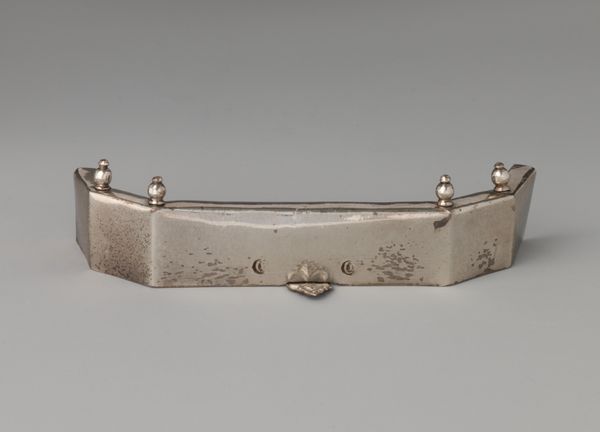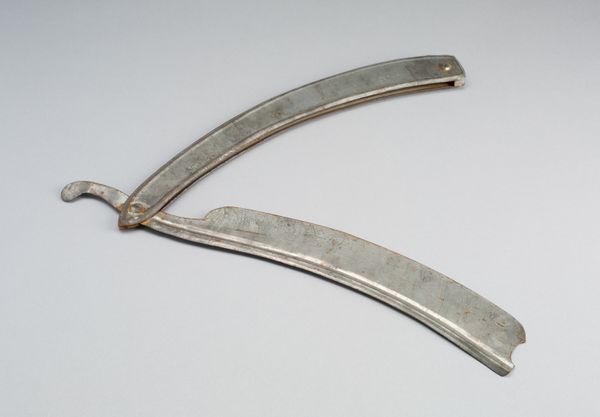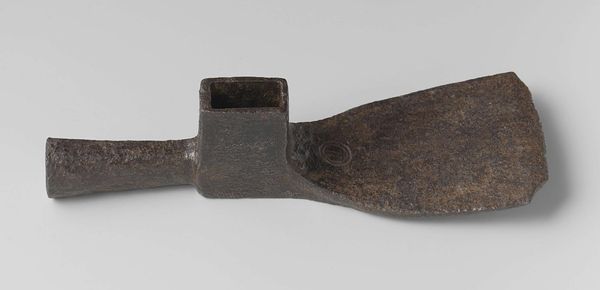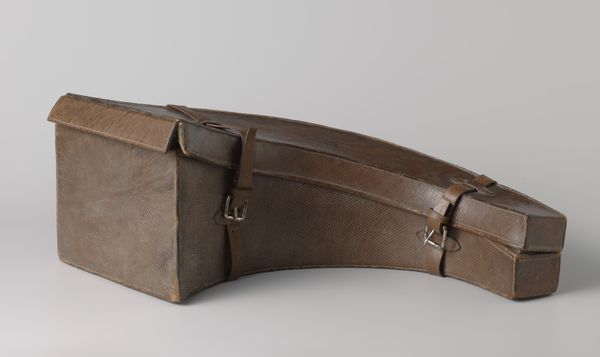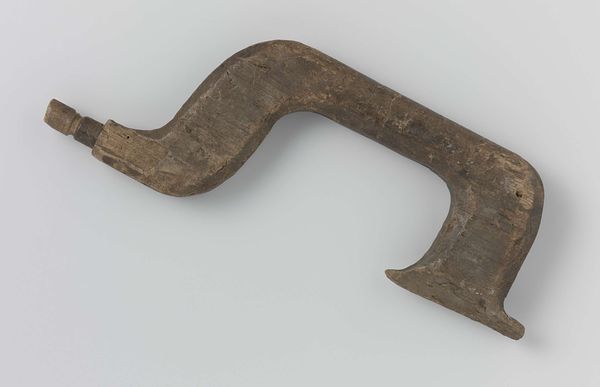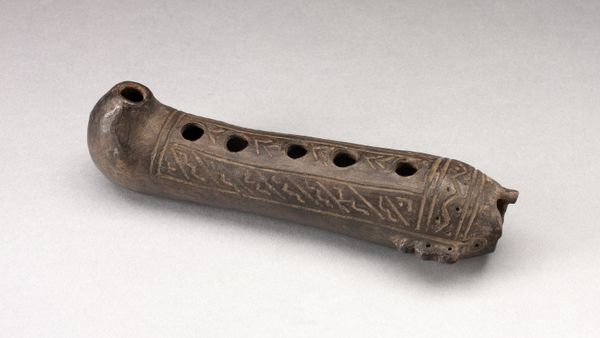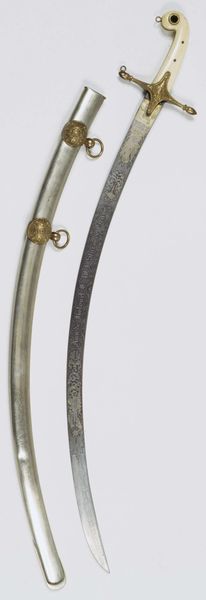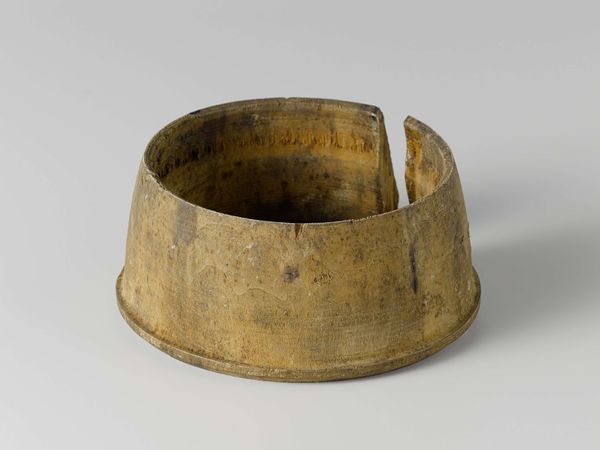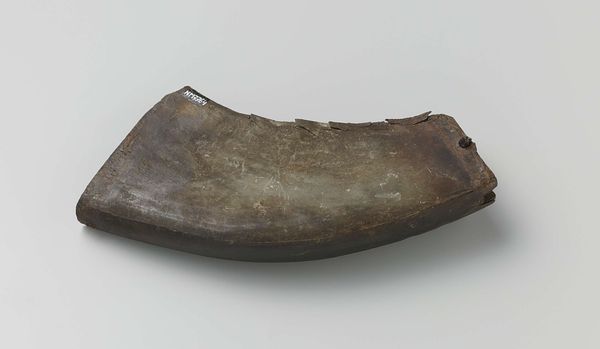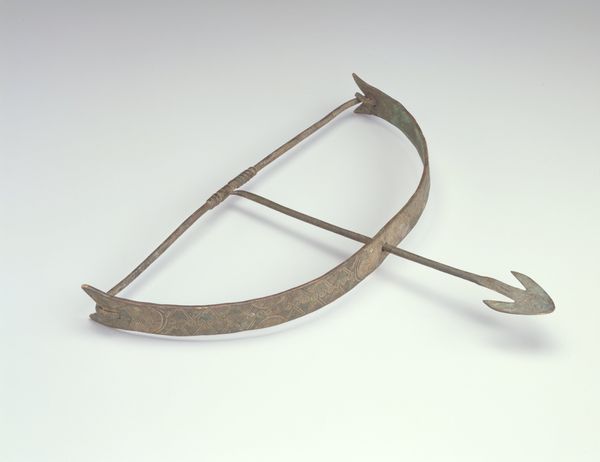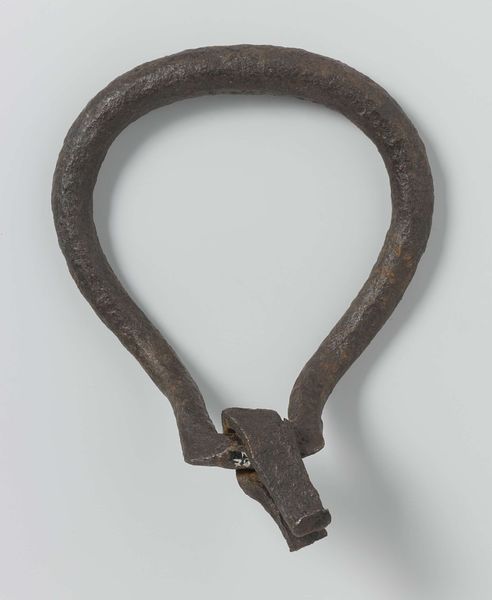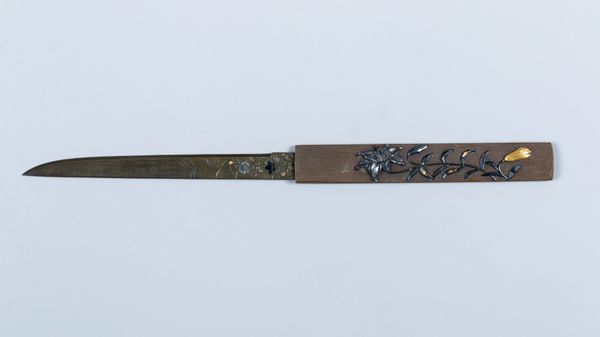
Crinet Plate Belonging to an Armor for Field and Tournament Made for Duke Nikolaus "The Black" Radziwill (1515–1565), Duke of Nesvizh and Olyka, Prince of the Empire, Grand Chancellor and Marshal of Lithuaniac 1530 - 1580
0:00
0:00
metal, sculpture
#
medieval
#
metal
#
sculpture
#
sculpture
#
armor
Dimensions: H. 2 3/8 in. (6 cm); W. 10 5/8 in. (27 cm); D. 6 5/16 in. (16 cm); Wt. 8 oz. (236 g)
Copyright: Public Domain
Editor: This is a crinet plate from a field and tournament armor, dating back to 1530-1580. Crafted by Kunz Lochner, this piece, currently housed at The Met, would have been part of the armor made for Duke Nikolaus "The Black" Radziwill. It strikes me as so intricate, especially considering its purpose was protection. How do you see this piece functioning beyond the purely practical? Curator: Beyond its obvious martial purpose, this crinet plate sings of power and status, doesn’t it? I imagine Duke Nikolaus, 'The Black' himself, beneath layers of steel, a Renaissance man of war and diplomacy. Look closely—the etched designs, now faded with time, once shimmered with gold. This wasn't just armor; it was wearable art, a statement of wealth and sophistication. Does seeing this, make you wonder about what it would be like to be powerful enough to want it? Editor: Absolutely. The level of detail is astonishing. I almost wonder if the craftsmanship itself served a psychological purpose – intimidating opponents, perhaps? Curator: That's insightful! Imagine facing such a figure on the battlefield. The gleam of the gold, the artistry...it’s almost as much about the psychological impact as the physical protection. Think of it as Renaissance "shock and awe"! Plus, these pieces often tell a story. I wonder what stories *this* particular piece might have witnessed, or *who* might have crafted the armor; a great feat to imagine in our time. It's a relic brimming with possibility, right? Editor: I hadn't thought of it that way – each etching like a verse in an epic poem of war. This has made me realize the cultural and psychological complexity embedded within something seemingly so straightforward as a piece of armor. Thanks so much! Curator: My pleasure! I like to think art like this is alive with history; maybe even alive because of it. It can talk to us across centuries, provided we're willing to listen imaginatively.
Comments
No comments
Be the first to comment and join the conversation on the ultimate creative platform.
